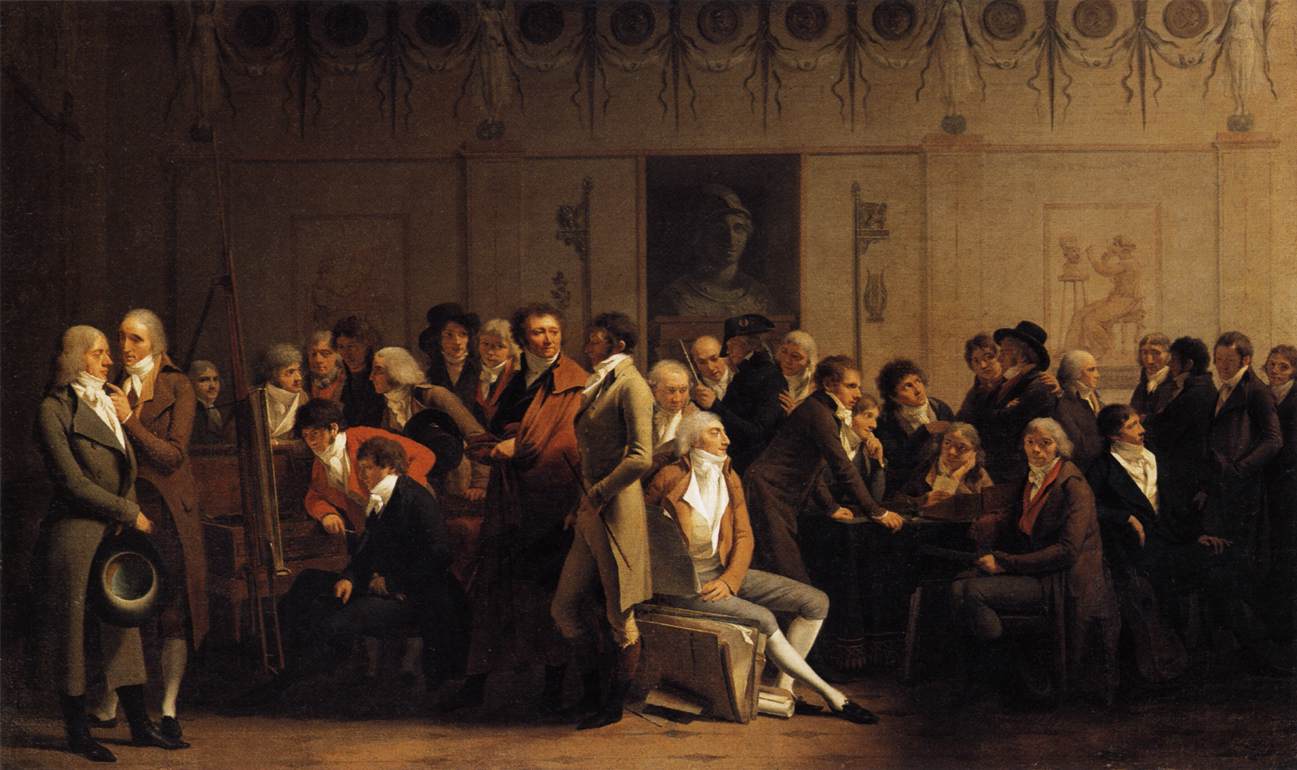The problem with worshiping genius is that for every Albert Einstein, there’s an Adolf Hitler.
 |
|
Aristocratic Heads on Pikes, authorship unknown
|
Yesterday, a reader sent me an interview with painter Larry Poons. It was in The Art Newspaper as part of the run-up to the release of The Price of Everything on HBO.
Larry Poons is an abstract painter who currently teaches at the Art Students League in New York. He had valuable things to say, but this struck me as absolutely wrong:
“Success is in the studio. That’s the only success there is. The only other type of success is business: it’s not art. There’s nothing wrong with business and there’s nothing wrong with art but they’re two separate things. If you define success as being able to sell something to pay the rent, then that means you’re successful at paying your rent. It doesn’t mean that your art is any good or not.”
 |
|
Napoleon on his Imperial throne, 1806, Jean-Auguste-Dominique Ingres, courtesy Musée de l’Armée
|
I sympathize with his frustration with the high-end art market, but his attitude, shared by many of his peers, is part of the problem. This is the Cult of Genius that has beleaguered art since the Enlightenment—the idea that artists are above the struggles that drive mere mortal men. Prior to the 18th century, artists were considered craftsmen. While they may have been very successful and well-paid, they had no intellectual pretensions.
The Enlightenment asked artists to talk about civics and politics instead of religious values. This raised their status to that of intellectuals, almost gentlemen, in fact. Their training moved from the old apprenticeship/atelier model to formal art schools. For example, the Royal Academy of Arts was founded in 1768. Its mission was to raise the professional status of the artist by establishing a sound system of training. Along with these formal schools came the idea that artists were intellectuals.
 |
|
Portrait of Sir Isaac Newton, 1704, by Sir Godfrey Kneller, courtesy National Portrait Gallery
|
The idea of genius was born in the Enlightenment. It was the age of Newton and Napoleon, and it created a curious dichotomy. While governments were being formed on the idea that all men were created equal, certain men—geniuses—were growing ever more more equal than others.
More and more, these geniuses, like Percy Bysshe Shelley, began to operate outside the norms of society. The Cult of Genius brought us some great art, but it also ushered in a dreadful time in Europe. This included Robespierre’sReign of Terror in France, the genius cult of the Nazis, and Stalin’s Cult of Personality. All were possible because Great Men were more influential than unyielding values.
 |
|
Self Portrait (dressed as an academic, not a craftsman), 1776, Sir Joshua Reynolds, courtesy Uffizi Gallery
|
As counterintuitive as it seems, in the end this has landed us in the modern dilemma of having so much banal, boorish, casual and ultimately meaningless material foisted on us as art. The genius doesn’t communicate; he proclaims. That means he doesn’t have to listen.
Ultimately, a person who is above money is completely out of touch with almost everyone else. In the end, that kind of attitude is what’s given artists such a terrible reputation in modern America, and why parents don’t believe their kids can make livings in the arts.










